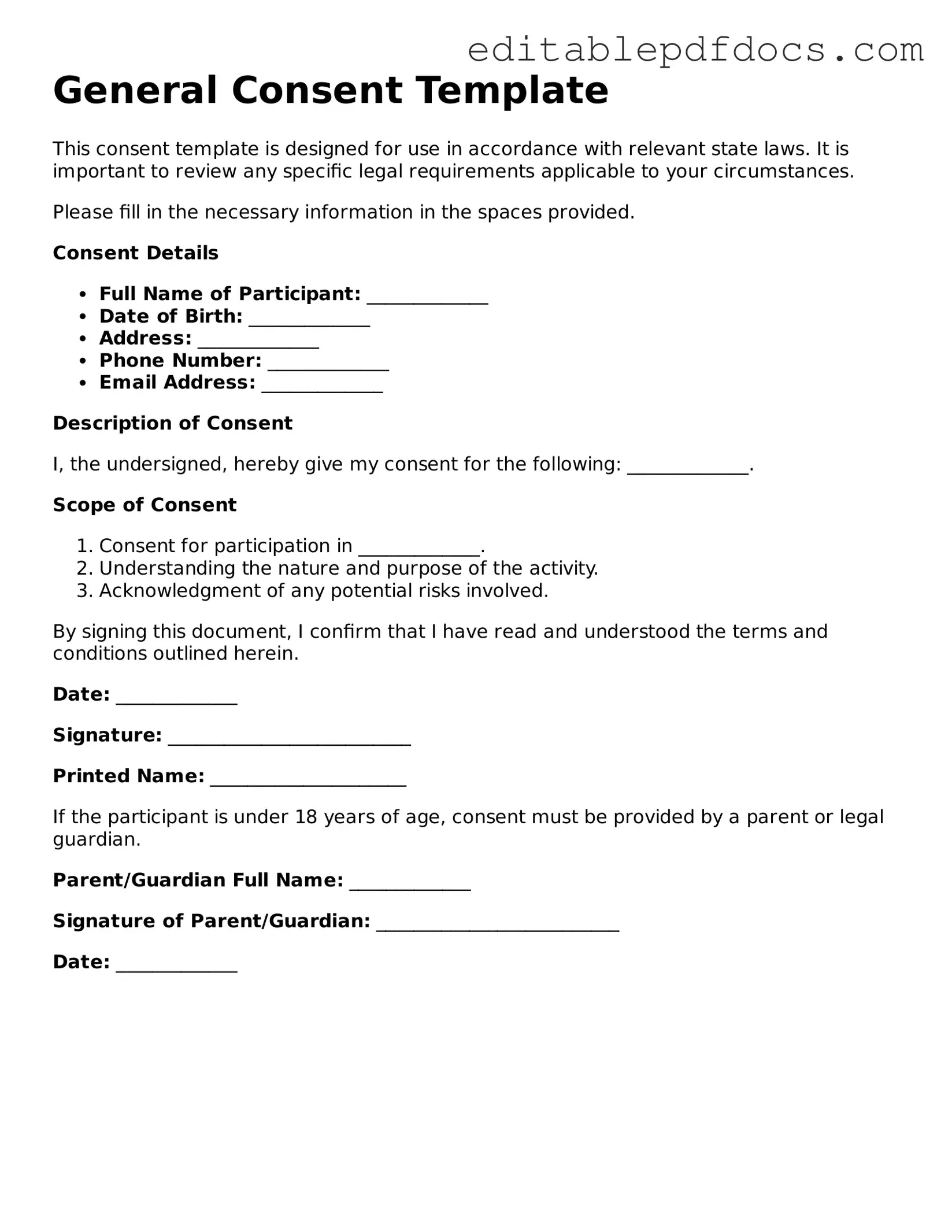The Consent form plays a crucial role in various contexts, particularly in healthcare, legal agreements, and research. It serves as a written document that outlines the permission granted by an individual for specific actions to be taken regarding their personal information or participation in activities. Understanding the key components of a Consent form is essential. Typically, it includes details about what the individual is consenting to, the purpose of the consent, and any potential risks or benefits involved. Additionally, it often specifies the duration of the consent and the rights of the individual to withdraw their consent at any time. Clear language and transparency are vital, ensuring that individuals fully comprehend what they are agreeing to. This form not only protects the rights of individuals but also establishes trust between parties involved, whether in a medical setting, during a legal procedure, or in research studies.
